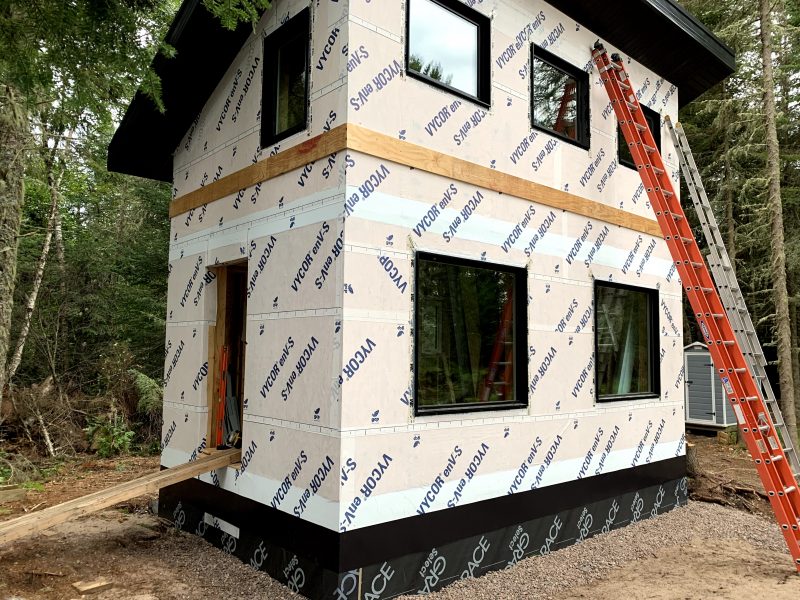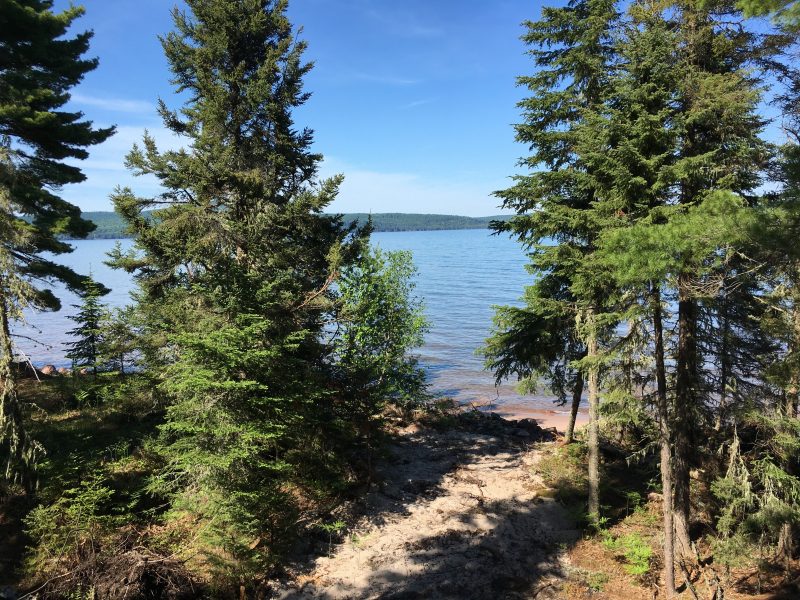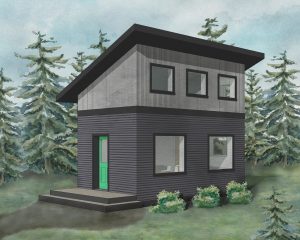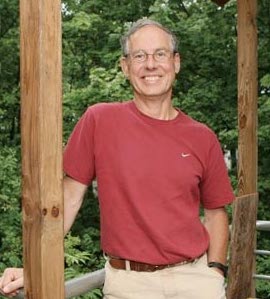
Paul Sanders shares his knowledge on Husky Bites, a free, interactive webinar this Monday, October 18 at 6 pm ET. Learn something new in just 20 minutes (or so), with time after for Q&A! Get the full scoop and register at mtu.edu/huskybites.
What are you doing for supper this Monday night 10/18 at 6 ET? Grab a bite with Dean Janet Callahan and Paul Sanders, Professor of Materials Science and Engineering at Michigan Tech.

Tiny houses are springing up all over the US. But in the Upper Peninsula of Michigan, where Michigan Tech is located, total snowfall can exceed 200 inches during the winter. Designing a tiny house for Michigan’s UP involves several extra layers of complexity. Especially if you want that tiny house to be carbon-neutral.
Last spring, a group of students in the Green Campus Enterprise at Michigan Tech took on the challenge: design and build a sustainable and affordable tiny house for cold climates—one that would serve as a model for green, energy-efficient (tiny) housing.

Michigan Tech’s Green Campus Enterprise was created in 2008, part of the Higher Learning Commission’s Academic Quality Improvement Program (AQIP) project. Under the AQIP project, Green Campus is charged with estimating the University’s carbon footprint and suggesting ways to reduce it. The team is advised by Chris Wojick, senior researcher at Michigan Tech’s Great Lakes Research Center, and Rob Handler, operations manager/senior research engineer at Michigan Tech’s Sustainable Futures Institute. Students taking part in Green Campus Enterprise annually measures the carbon footprint of Michigan Tech, and also design and implement projects to improve sustainability.
The Green Campus team began by working with their client, Sanders, to design the Tiny House with his family’s checklist and the team’s sustainable goals in mind. They researched and developed innovative solutions for making common building practices more sustainable. Next, the team modeled the thermal and energy performance of their preliminary tiny house designs. Once the best option was modeled, they worked directly with Sanders to create construction drawings and bring the house from idea to reality.

The team constructed sections of the tiny house on campus. Then Sanders, along with a lot of help from his son Caleb, assembled the home on their property in Bete Gris, Michigan, on Lake Superior. The result: a very sustainable (and cute and cozy) tiny house, which will hopefully be sided before the Keweenaw winter!
During Husky Bites we’ll meet the team, see the house, and find out just how they did it. Joining in will be Michigan Tech’s Tiny House team leader Sierra Braun, who graduated from Michigan Tech in May 2021 with a BS in Civil Engineering. While on campus, she led Green Campus Enterprise. Dave Bach, the team’s consultant and mentor to Sierra, will be at the session, too. Bach is an expert on sustainable building design and a Michigan Tech alum. Last but not least, environmental engineering undergraduate Nick Kampfschulte will be at the session, too, to tell us about the tiny house thermal modeling/sensing system he helped design.
Sanders, a six-sigma black belt engineer during his employment with Ford Motor Company, has led Michigan Tech’s highly successful MSE senior design program since 2010. Sanders has been successful in securing industry sponsorship for 100 percent of all MSE senior design projects since 2011. This time, however, he decided to sponsor and fund a student project of his own: A two-story tiny house. Instead of seeking out a senior design team for the Tiny House project, however, he sought help from Michigan Tech’s Green Campus Enterprise. Sanders knows a thing or two about Michigan Tech’s award-winning Enterprise Program. He previously served as an advisor to another Enterprise team, the Advanced Metalworks Enterprise.
Enterprise is a program unique to Michigan Tech, open to students of any major. Teams operate like companies, serving clients in a business-like setting to create products, deliver services, and pioneer solutions. There are currently 24 Enterprise teams on campus. Students in Green Campus Enterprise design and implement projects to improve the sustainability of the Michigan Tech campus, and measure its carbon footprint each year. The team was started in


Prof. Sanders, how did you first get into engineering? What sparked your interest?
As a kid I liked to build structures (play houses, cars) out of wood. I also liked chemistry, math, and physics in school.
Hometown, family?
I grew up in Pulaski, Wisconsin as the oldest of three. My father was a high school chemistry teacher, and my mother was an elementary school teacher.

What do you like to do in your spare time?
I enjoy building and remodeling. I also enjoy meeting new people and living (not traveling) in different places around the world.
Did you know?
Dr. Sanders is one of Michigan Tech’s most prolific and creative researchers. Check out the website of his research lab, Alloy Research Central, at http://alloyresearch.mtu.edu.
Sierra, how did you first get into engineering? What sparked your interest?
I’ve always enjoyed thinking through problems, and designing and building things as a kid. Growing up, my family did some fun construction projects, too, from building dog houses and bookshelves to a cabin and a treehouse.
Hometown, family?
I’m from Stratford, Wisconsin, currently living with my boyfriend and our two cats.

Nick, how are you involved with the Tiny House project?
My role was to aid in the overall design and modular construction. I also worked on designing and implementing its thermal modeling/sensing system.
Hometown?
I grew up in Grand Rapids, Michigan.
What do you do in your spare time?
I repair, build, and restore automobiles. I’m also into metal fabrication.
Dave, how are you involved with the Tiny House project?

I served as the team’s design and building advisor and mentor. I’ve been a professional sustainable builder and designer for the past 42 years.

What do you like to do in your spare time?
I’ve lived in the Copper Country since 1979, and in Houghton since 1999. I participate in all outdoor silent sports, especially mountain biking and cross-country skiing.